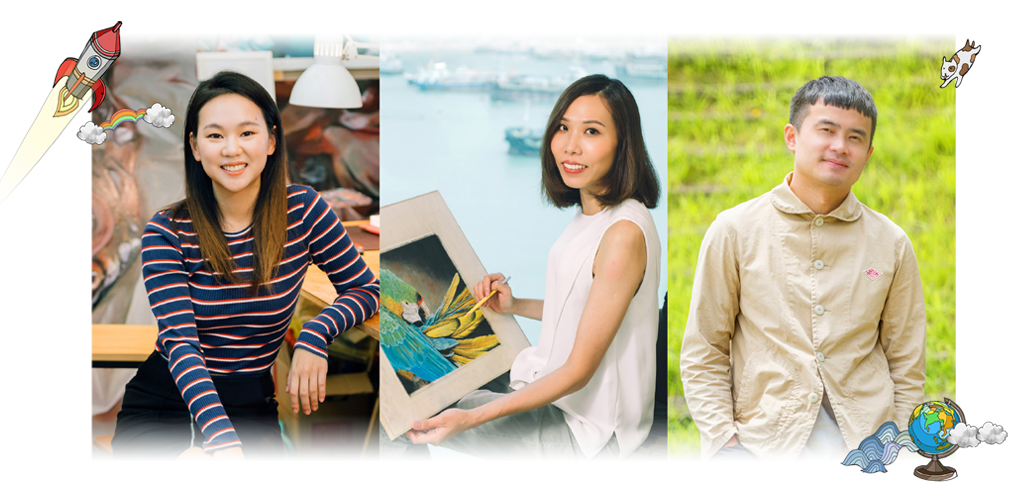HKUST is renowned for technology and science; but a new breed of graduates demonstrating creative inspiration is on the rise.
Our University has rightfully earned its reputation as a leader of science and technology in Asia, but many people might not see that HKUST is producing individuals that are flourishing in the artistic and creative space. As creativity becomes essential to the new digital economy, we meet three artists from HKUST who are striking it out big for themselves in the art scene. Their drive, passion and spirit are demonstrating science and technology do indeed go handin- hand with the arts, and in tandem create a flourishing partnership in line with the zeitgeist of the digital world.
Vivian Ho: Artistic rebel with a cause

I was hitting a bottle neck and wanted some more commercial skills. I was visiting a friend at HKUST and I thought it was very beautiful, so that kind of sealed the deal for me.
It is mid-morning as we find ourselves in the middle of Fo Tan, an industrial area that has seen a thriving art scene arise in the midst of factory buildings. Inside one of the many facilities that hosts everything from music clubs to food production spaces is the studio of Vivian Ho (何博欣) MBA 2018. At once upon entering we get an idea of the life of an artist — beautiful expansive oil paintings are all around us, along with posters Vivian made for the likes of local companies, and film festivals, among others, all completed in her distinctive rebellious, joyous and humanistic style.

Originally from Hong Kong, Vivian graduated from Wesleyan University in Connecticut in 2012, majoring in Studio Arts and Economics, and pursued a career in art. “I turned down an offer to do law and decided to do economics and art, as I figured I was still studying and I should try to be creative while I still can, and how amazing it would be if my whole life consisted of thinking in colors and shapes,” says Vivian. She swiftly made a name for herself as an oil painter and illustrator with a penchant for a nonconformist, rebellious style that doesn’t tick the boxes.
Many art critics in Hong Kong have described Vivian as an important newgeneration artist for the city. She has held several exhibitions, building a reputation for imagination and sharp insight, with depictions of ordinary people in city life, creating a romantic, almost cinematic vision of life.
In her lively studio, we are looking at a large sized painting of fish heads in a market basket, part of a series she first created during her undergraduate years at Wesleyan. The painting we are looking at is significant, as it has just been acquired for the upcoming M+ Museum in West Kowloon. It is lucky that the painting is still in her hands: she originally sold it to a Malaysian restaurant in Shanghai, at an art fair in Beijing. When M+ Museum expressed an interest in the painting, she flew to Shanghai and reacquired it; taking it off the canvas, unrolling it, transporting the painting, and putting back on a canvas — the rest is history.
The painting, which blends visceral realism with pop art and abstract expressionism, is quintessentially Hong Kong, a signifier of this cultural identity that Vivian is very proud to have. In Asia, a fish head can be seen as something delicious and enticing, whereas in America, many people might see it as disgusting and unappetizing. Vivian’s work in many ways is a portal into the cultural dichotomy between East and West. “I painted the heads on a very big scale during my thesis (at Wesleyan) to show the audience that if you look at fish heads as colors and shapes they are really beautiful, an abstraction of a real-world thing. The American students often said it smelt fishy in the studio, while the Japanese would come in and say it looked tasty,” Vivian says.
The acquisition by M+ Museum is a major affirmation of her status as one of Hong Kong’s hottest young artists: Not just one for the future, but an individual to watch for the now. It wasn’t always like this, when Vivian graduated from her undergraduate degree she started seeking out banking jobs, but as she puts it, “nothing worked out, so I pursued art, but I didn’t know anyone and I had no connections at all,” she says.

Vivian asked her old professor who told her a few words of wisdom to survive: 1) Buy your own domain name; 2) Go to many parties; and 3) Don’t date another artist. It seems to have made sense, and fortunate for fans of art in the city. Her recent exhibition, ‘Wish You Were Here’ features 12 illustrations with surreal illustrations in vivid colors that merge the fantasy worlds with the familiarity of a Hong Kong environment, that are playful and evoke memories, hopes and dreams. The works have been building buzz around the city and are reminiscent of surrealists such as Salvador Dali and René Magritte, while retaining a photorealist style that also integrates elements and stylings of digital art.
For the first three years in Hong Kong, Vivian decided to hustle hard and build a name for herself. She had exhibitions everywhere from cafes to bars and even had an experience where the gallery hung her painting upside down. “No one noticed, so that was fine by me,” Vivian says in her easy-going insouciant manner.
Showing her business savvy, Vivian also decided to pursue an MBA from HKUST. “I was hitting a bottle neck and wanted some more commercial skills. I was visiting a friend at HKUST and I thought it was very beautiful, so that kind of sealed the deal for me. HKUST was going to be the destination,” says Vivian.
The skills Vivian learnt proved to be very complementary with her art career, and made her appreciate the career she had built in art, even if it involved the trials and tribulations of attempting to be an artist, when so many people fail. “I was so much more focused, as an artist there are so many things to overcome. In art college the students are the coolest kids and the studio is a playground, but when you put it into practice it is much harder. There is a lot of loneliness, other peoples’ hours are different, whether it is your friends who have office jobs or other artists who work on weekends. It can be overwhelming, you see your peers having normal hours with their handbags and nice shoes, and you still have a backpack and are covered in paint. Sometimes you think, what the hell am I doing here?” she says.
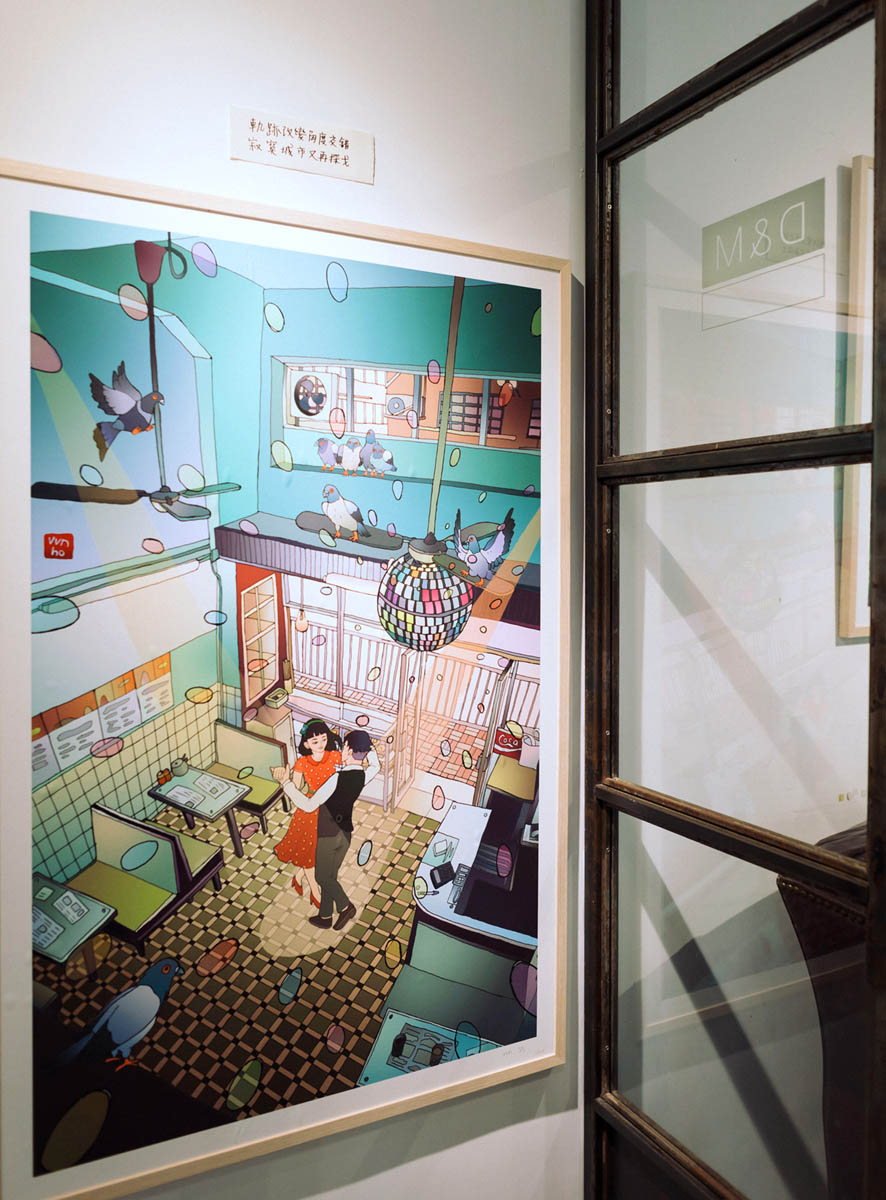
For now, Vivian’s career is on the up and up. The MBA helped her gain confidence, more negotiation skills, and allowed her to navigate the complexities of the art world. “I used to have a ‘finance phobia’, I hated anything commercial and related to money, now I understand the importance of managing the money side of the art world: ignorance is not bliss,” Vivian says.
The world is Vivian’s oyster, and she is ready to move her career onwards and upwards. “Medium should not be a boundary for what I can try,” she says. “I like high quality paint but I can also use primary school kids’ crayons to do something,” she says. At the moment, she is working on a series of commercial works, and this, she laughs, “is where the MBA part kicks in. I don’t have a manager, I do the quotation, pitching, and everything myself.”
Part artist, part business woman, Vivian is the artistic rebel with a cause.
Claudia Sin: Art dreams take flight

Drawing and flying are both my childhood dreams. I see this as a long interlude in what should be a 40-year flying career.
We are now in Tsing Yi, at the flat and studio of Claudia Sin(冼家寶)BEng Civil Engineering 2007, and it’s a beautiful day, overlooking the channel towards the hills of Tsuen Wan, the sun cascading down the slopes of Tai Mo Shan and Tai Lam Country Park. Claudia is discussing her fascinating career which spanned being a pilot with her husband on Cathay Dragon, while simultaneously keeping up an interest in art and in particular pets.
The pandemic has been tough for pilots, and the closure of Cathay Dragon was a setback for Claudia and her husband Freddy, who is also an alumnus of HKUST. “It was sad in many ways, especially as Freddy and myself had not been able to fly together, which was a dream of mine for over ten years,” Claudia says.
But there is always a silver lining to every crisis, and Claudia was able to pick up her childhood dream of being an artist, with a focus on drawing pets. “I hadn’t picked up my drawing pencil for a few years, and with the pandemic and the shutdown of Cathay Dragon, we really had nothing to do, I was sitting at home, thinking of what to do with myself, and I went to pick up oil painting again, watching YouTube artist channels and learning more about pastel drawings and in particularly animal drawings,” says Claudia.
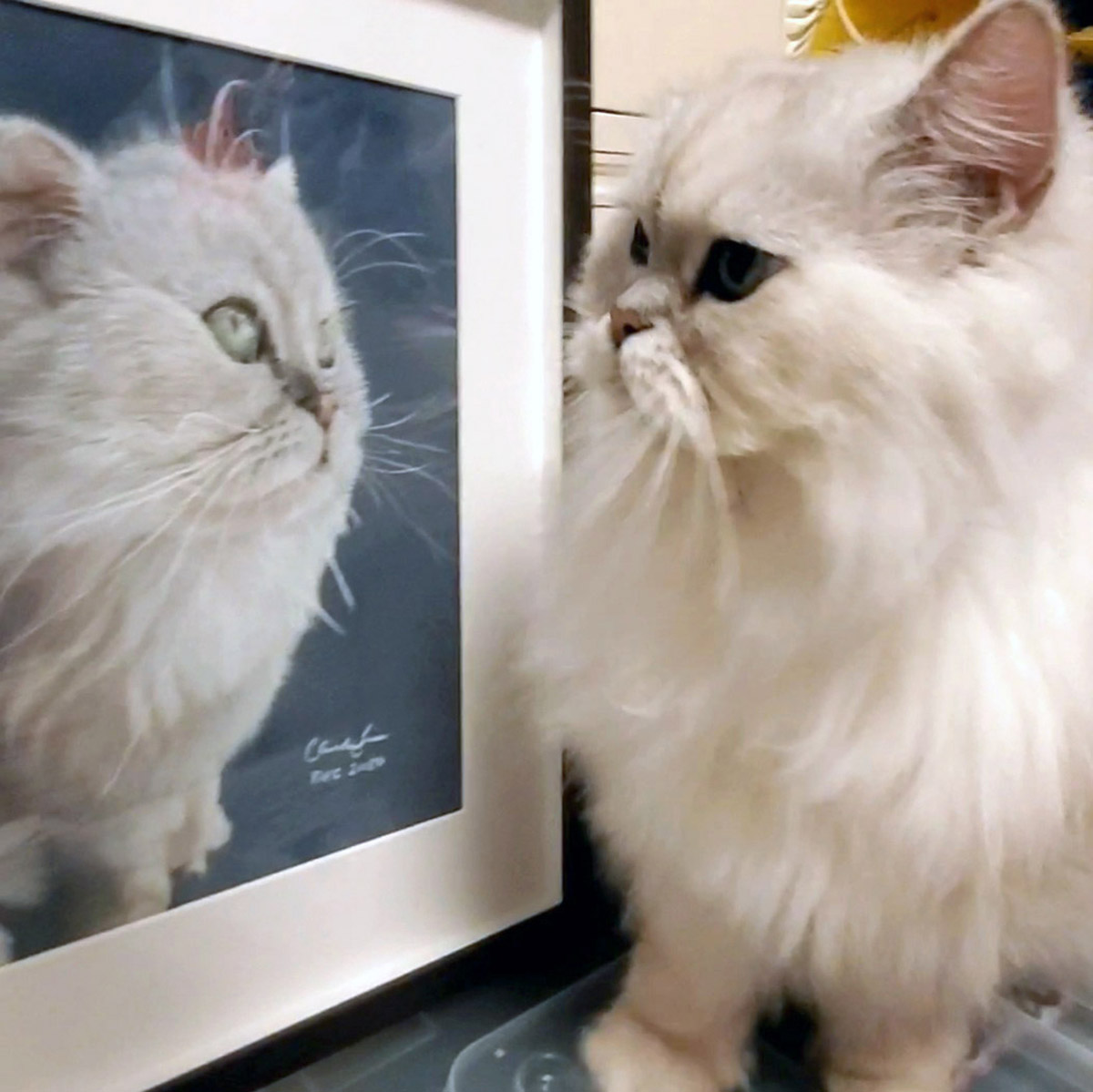
Claudia has been interested in animals for a very long time, having owned pets, and had completed pet portraits before. Her current focus on pets came about in a very unusual way, showing that in many instances, life is able to be lived very fortuitously. With uniforms needing to be returned to Cathay, a friend of Claudia helped her take photos with her husband Freddy and their children in full pilot garb.
“To thank the photographer, I decided to make a pet portrait of her dog, and also to practice for myself. I gave her the portrait, and she was so amazed by it. After the photographer shared the portrait with her friends, suddenly everyone had a great interest in me and my work, and some Hong Kong celebrities started sharing it on their social media accounts,” says Claudia.
Soon Claudia’s work was receiving widespread coverage in newspapers and magazines, and within a matter of weeks, she was getting contacted for commission work from all over the city. Her works have built a buzz online, and she has been invited by many people to draw their pets, so much so that she can barely keep up with demand.
“I didn’t plan this situation, and was pretty amazed by it, so I started my own social media channels, and now my waitlist has become very long,” Claudia says, looking like she doesn’t even believe the situation herself.

Looking at Claudia’s artwork, one is inspired by her life-like depictions that create a sense of beauty and intimacy. Yet one of the limitations of Claudia’s work is the time it takes to complete one portrait, taking anywhere from one to two weeks, and meaning she can only draw a handful in a month. “For small portraits it might take a week, but for others they might be bigger, taking two weeks, and people might also have two or more pets in one portrait as well, and this takes a longer time” Claudia says.
It is wonderful for Claudia that she is able to use photos to draw, which can be enlarged so she can capture all the details that make her work so famous. “I ask the clients to take the reference photos, but in many cases they can’t get the photos I want so there is also a bit of back and forth, but it’s all part of the artistic process,” Claudia says.
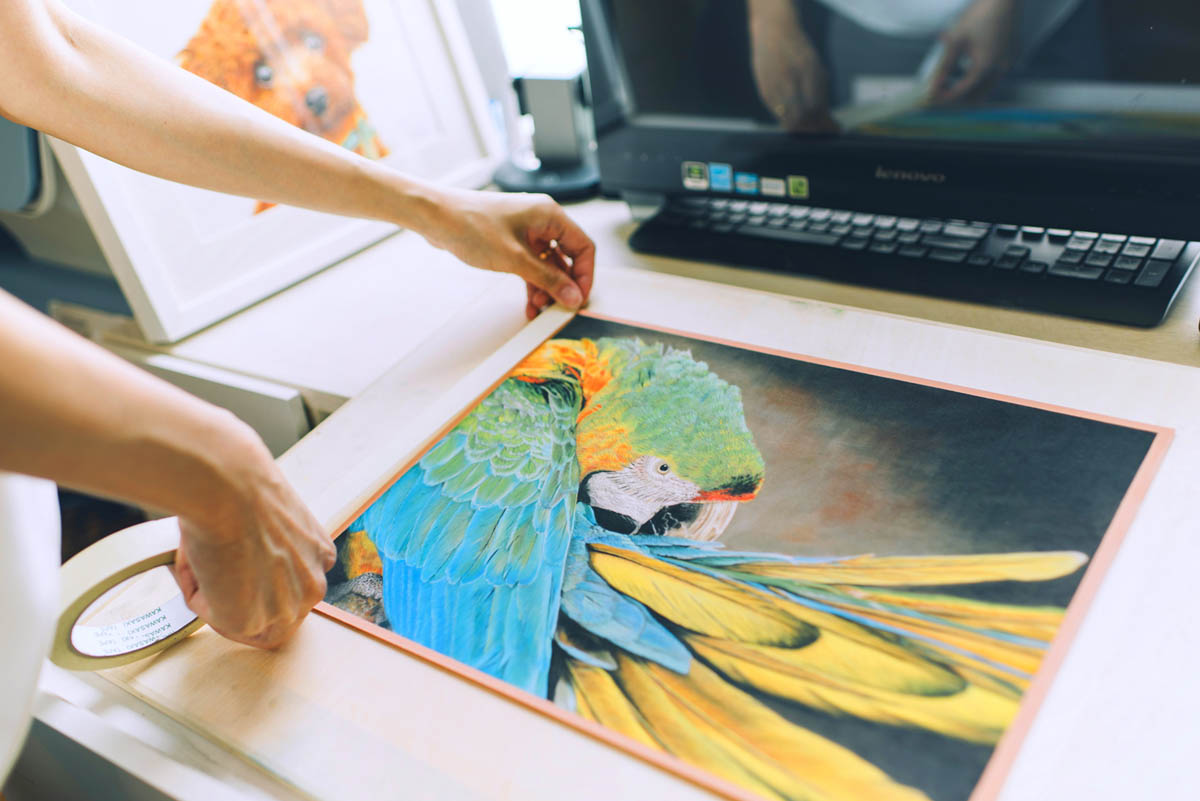
Claudia also works on her own oil paintings, which share a similar photo realist style, but also have a sense of harmony in composition and color, with vivid liveliness that recall the Impressionist stylings of Pierre-Auguste Renoir or Paul Gaughan. Does Claudia think she will return to flying or stay in her new found career as an artist?
“Drawing and flying are both my childhood dreams. For the last ten years I have been flying and I’m just so grateful I made these ambitions to come true. During the pandemic, I have been reviewing my life, and I realized that this is a great chance to do something very different. Now I feel I should take this opportunity while the pandemic is still here, as we don’t know how long it will last for. I see this as a long interlude in what should be a 40-year flying career. Ideally I will be able to do both forever,” Claudia says.
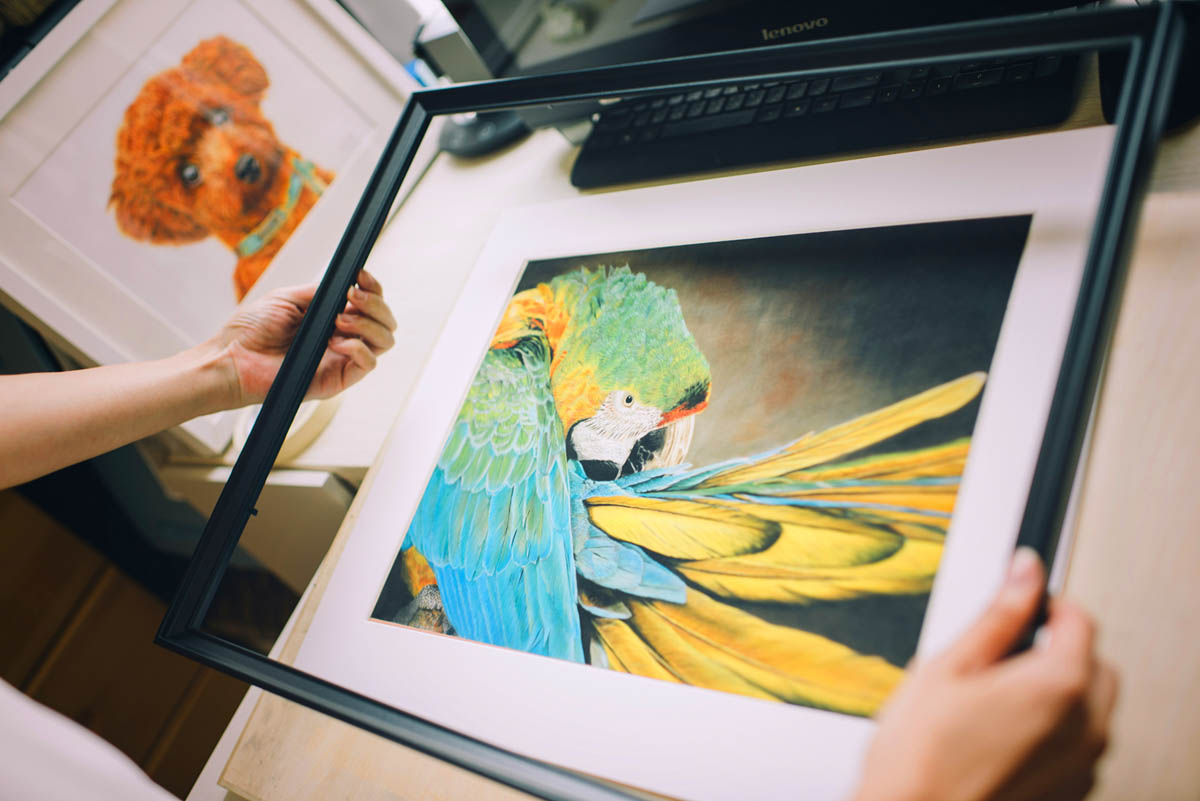
What is the plan for the moment? “I have been reducing my commission work a bit, and improving my skills. I don’t always want to draw dogs and cats, as much as I love them! I’m now focusing on other areas, including parrots, tigers, elephants, zebras, and other animals. I also want to try different mediums and explore different styles,” says Claudia.
One can tell that with this artist, the sky is really the limit.
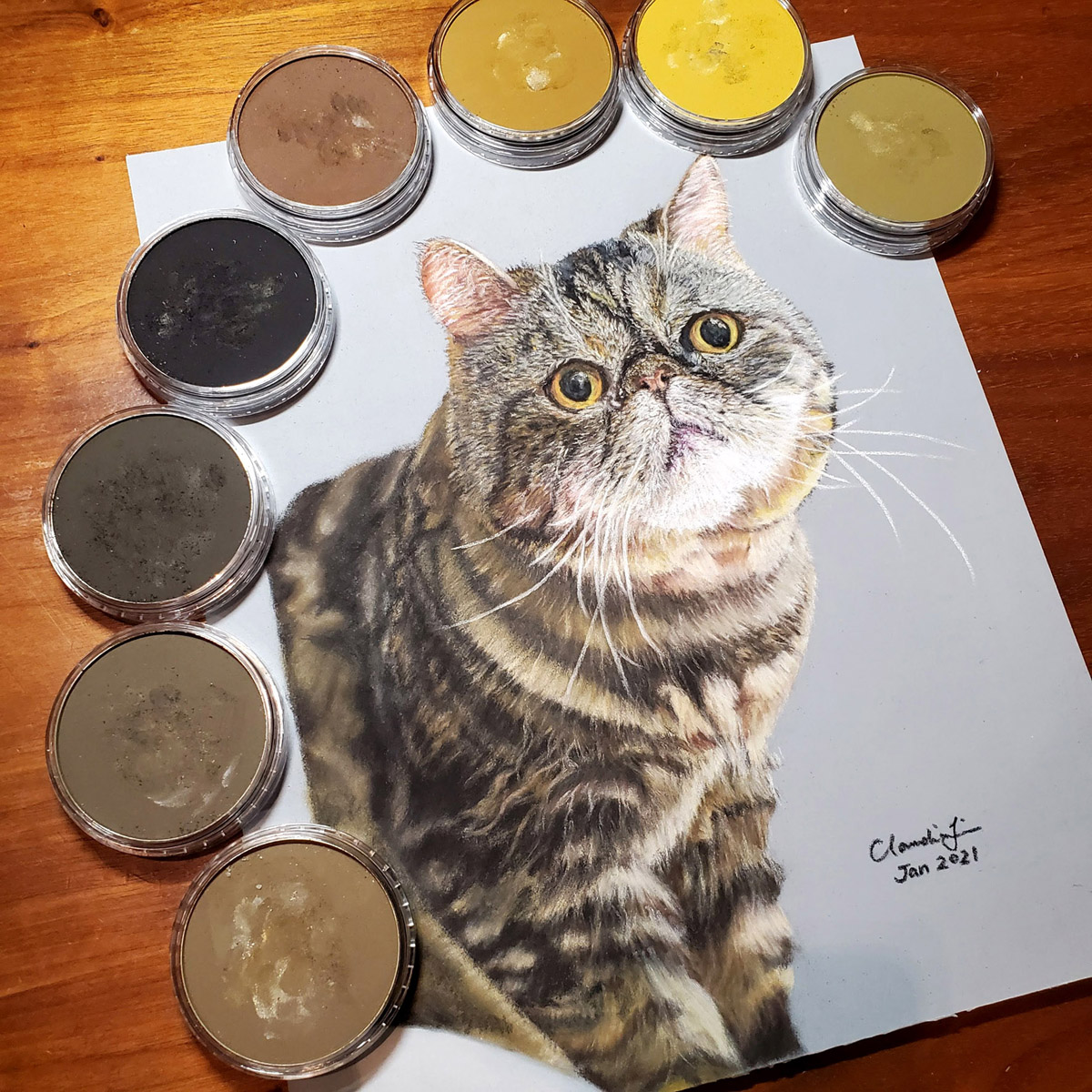
Ka Sing Fung: A directorial dreamer

At HKUST, I found a passion for reading and writing, and started writing a blog as well, and I was writing a lot.
One of the most glamorous jobs in the world seems to be movie director. But the reality is much more about hard work, and building your reputation from ground up. Ka Sing Fung (賈勝楓)BSc Chemistry 2007 is one of the new wave of Hong Kong directors and scriptwriters building excitement in Hong Kong cinema, after a lull in the scene. We meet the young film director at HKUST and talk about his hopes, dreams and ambitions. He loved art, writing and movies from a young age, studying Literature as a minor alongside Chemistry, and it turned out that this was a calling card for the rest of his career. While he was studying he started to read in the library, focusing on design and literature, which inspired him alongside his film and literature courses.
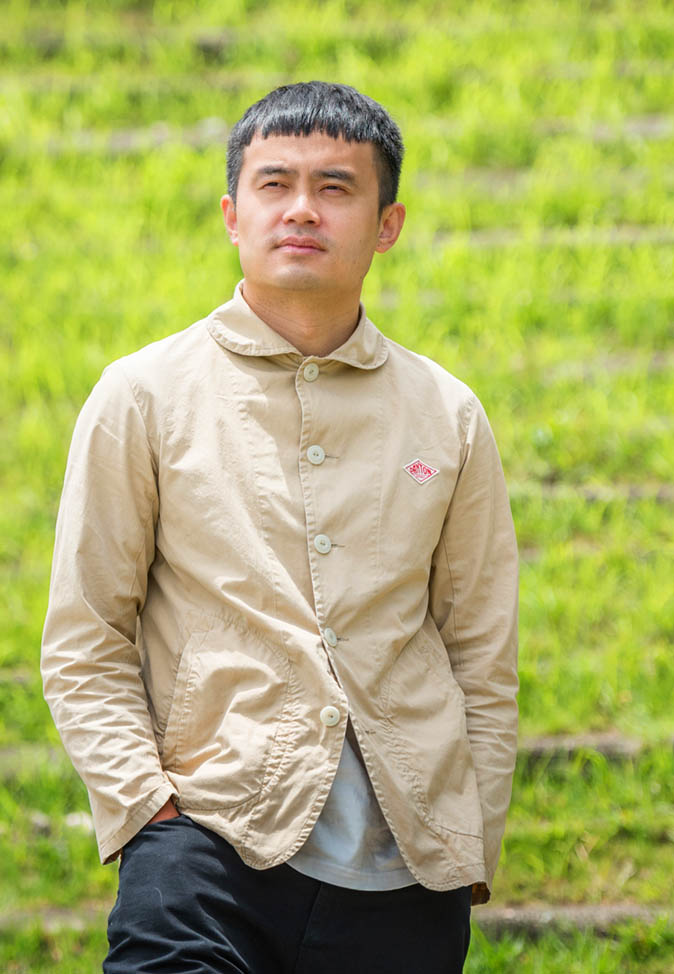

“At HKUST, I found a passion for reading and writing, and started writing a blog as well, and I was writing a lot. I love art, design, literature, film, and music, but unfortunately I discovered that I didn’t like Chemistry as much as I thought, and this worried me about what I could do for my career. I was studying really hard and did well in Chemistry for the first two years, but in the third year I had already found a part-time job as an editor in a magazine, so I was taking my foot off the pedal a bit and terribly in my third year, even getting a D in one course,” Fung says with his characteristic gregarious laugh.
After graduation, Fung went into editing and reporting first for Art Map’s a.m. post covering the art scene. He then worked for Ming Pao Weekly(明報周刊), writing about social issues and interviewing different types of people across many industries for two years. The next stop for Fung was Next Media, where he focused especially in travel for Eat and Travel Weekly (飲食男女), roaming all around the world, writing and making videos on the best destinations for people to travel and to eat. “It was an awesome job and I became a travel reporter for five years, I like learning the stories and cultures in that city, and I liked learning the sites and food. I wanted to know how they live, how they talk and what are the social issues in the city, the lifestyle and the culture,” says Fung.
Known for his observational directorial style, this interest in culture would continue during his film career. The path was very fortuitous, while engaged in travel writing the whole industry started moving towards streaming media and he was able to learn how to shoot video, write scripts and do everything else required for making film. This was part of the process that inspired Fung to become a film director. “I quit my job and started a film company, and I started to join several competitions for film, including the Freshwave International Short Film Festival, which was the first time I made a movie. I didn’t win, but started to gain the experience needed to make a major film. After writing a script with my wife, we entered the First Feature Film Initiative (FFFI) and won eight million dollars to make our first movie,” says Fung.
The movie script Fung struck gold with was Foster Love(流水落花), which he is currently making with the funding. Buzz is building in the film community, as several promising directors have won the FFFI and produced memorable local movies including Weeds on Fire(點五步), Still Human(淪落人), and My Prince Edward (金都). We joke that we will see Fung in gold chains and driving a Mercedes-Benz, but as he explains that the reality is very different. “You have to understand that I am even poorer now than I was before,” he laughs. “Eight million dollars goes all into production, and that already is quite a modest budget for a movie,” says Fung.
Of course, there were many challenges along the way, including those thrown up by natural forces. While making his first short film, A Bird Goes By(飛往父親的鳥) for the Freshwave International Short Film Festival, the team had to deal with the real force of Typhoon Mangkhut, one of the strongest storms to hit Asia in decades. “Our location was destroyed by the typhoon, and we had to choose another one,” says Fung.
Fung uses many Hong Kong cultural motifs, and one of his movies Gai Dan Chai(雞蛋 仔), is an example of his local approach. What does he think of the current movie scene in the city? “It’s not been that great in recent years, but I believe it will step up with new directors and working styles coming up. Things are changing, and I’m really happy to be part of this scene.”
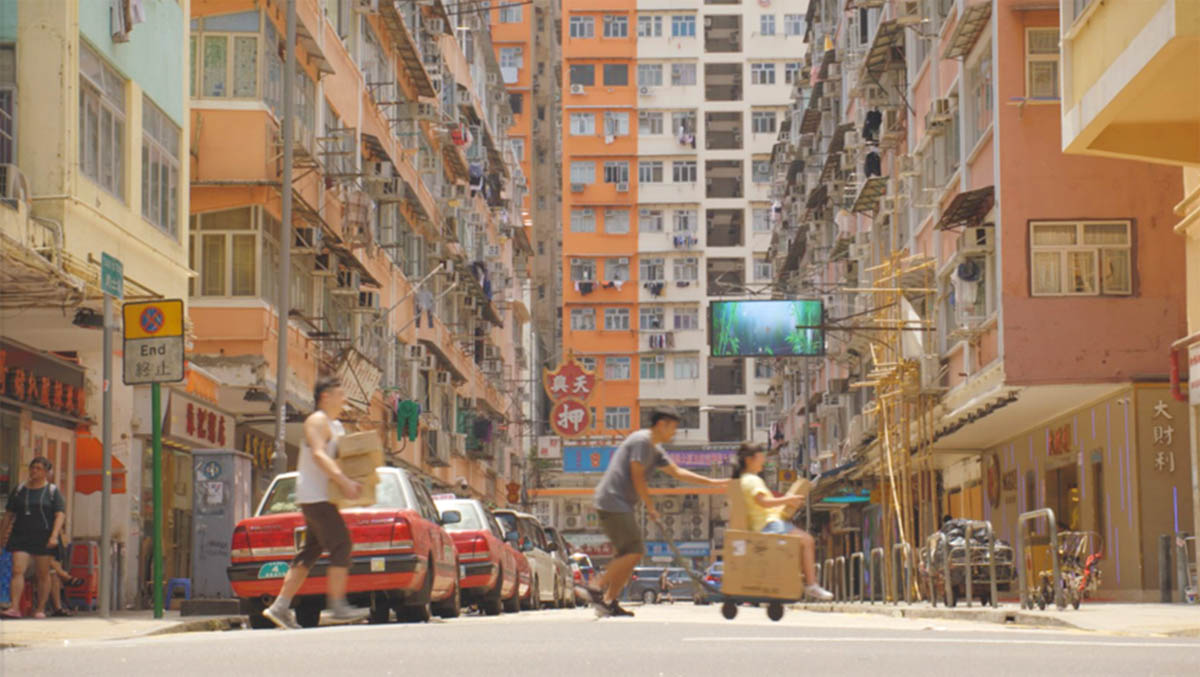
2019 13th Fresh Wave International Short Film Festival Closing Ceremony Video Gai Dan Cha(雞蛋仔)
Hong Kong eagerly awaits what Fung can do, along with the rest of the HKUST community. To him, and the rest of our artists, we salute you along your journeys.


